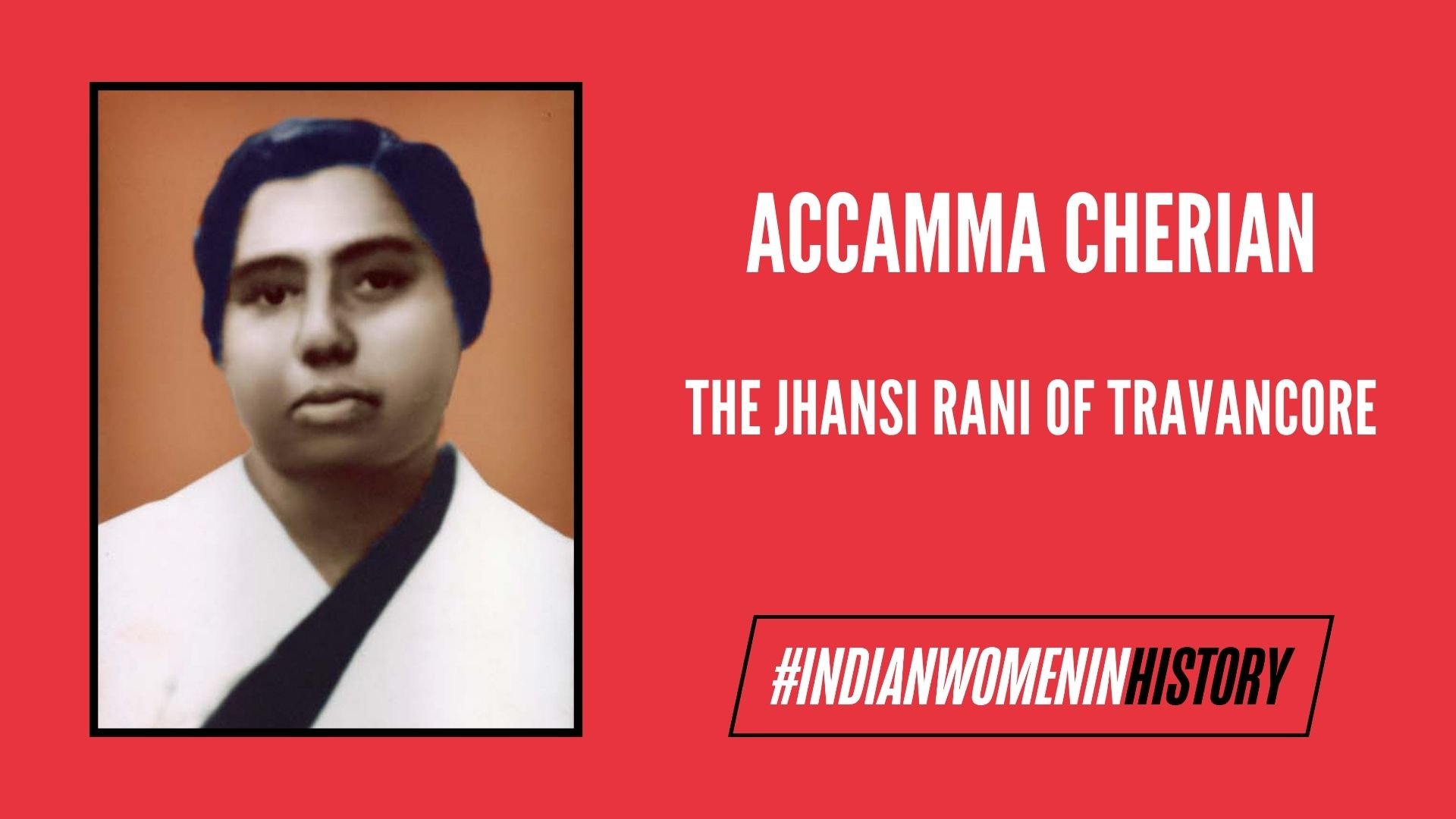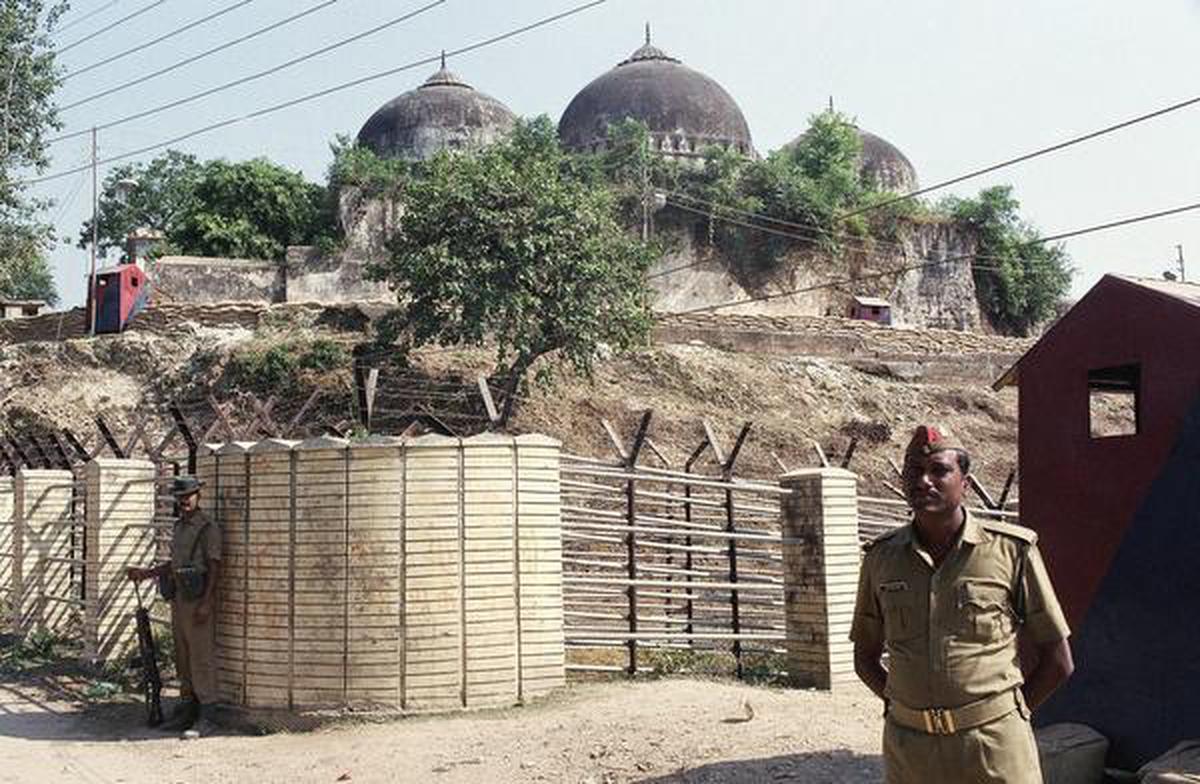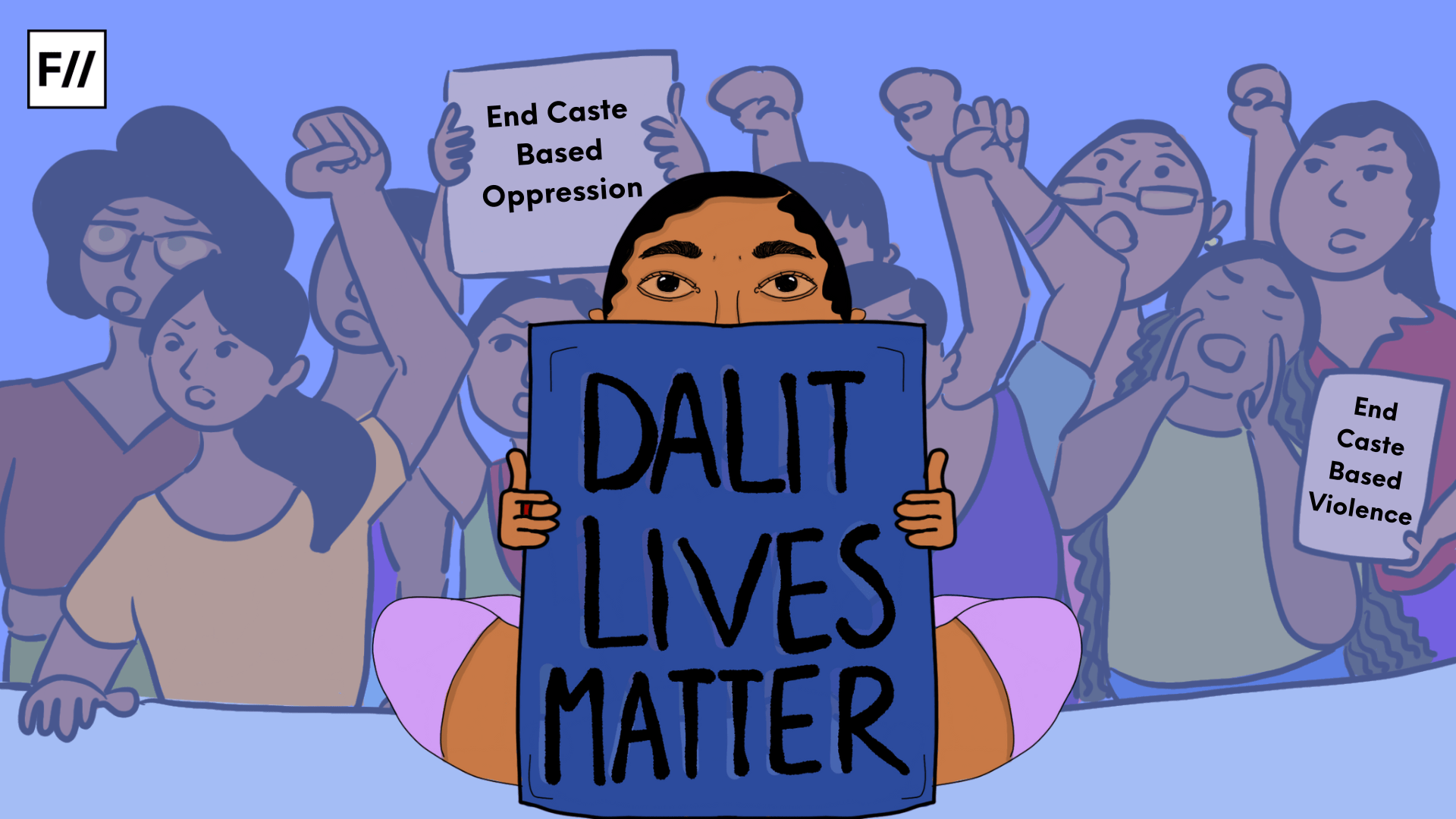I am the leader; shoot me first before you kill others.
These were the words of the brave Accamma Cherian who led a mass rally from Thamapanoor to the Kowdiar palace of the Maharaja Chithira Thirunal to get the ban on the State Congress lifted. Her courage was hailed by Mahatma Gandhi and she came to be known as the Jhansi Rani of Travancore.
Early Life and Education
She was born on 14 February 1909 in a Nasrani family (Karippaparambil) at Kanjirapally, Travancore to Thomman Cherian and Annamma Karippaparambil as their second daughter. She was schooled at the Government Girls High School, Kanjirapally and later at St. Joseph’s High School, Changanacherry. She did a BA in History from St. Teresa’s College, Ernakulam after which she took up teaching at St. Mary’s English medium school, Edakkara in the year 1931. She later went on to become the headmistress of this school and worked for this institution for six years.
Participation In The Freedom Struggle
Accamma’s calling to join the freedom struggle came when she joined the Travancore State Congress which was formed in February 1938. The people of Travancore under the leadership of the state government pressed for a responsible government. C. P. Ramaswami Aiyar, the Dewan of Travancore, decided to suppress the agitation since he was taking orders from the Maharaja. On 26 August 1938, he banned the State Congress by using his discretionary powers.
This gave birth to a civil disobedience movement, the first of its kind in Kerala. Various state Congress leaders including its President Pattom A. Thanu Pillai were put behind bars after which they decided to change their method of agitation. The President was given independent powers to choose a successor while the working committee was dissolved. Eleven Presidents of the State Congress were arrested one by one and the movement started to fall like a pack of cards. Kuttanad Ramakrishna Pillai, the eleventh president before his arrest nominated Accamma Cherian as his successor. A Strikers’ Union was formed and the Congress found their new leader in this bold and daring woman.
Accamma who was hardly 29 years at the time, writes in her autobiography, “I was aware of the seriousness of the assignment and knew what the consequences could be, yet I volunteered to do the job.”

The Congress Party found volunteers to mobilize and brought together the local youth from every nook and corner of Thiruvithamkur from Vadakkan Paravur to Kanyakumari. The Union of Strikers gave instructions to each group of volunteers to gather at Thampanoor in Thiruvananthapuram on Sunday October 23 to disrupt the birthday celebrations of the Maharaja. From the break of dawn, the streets were filled with a sea of people proudly donning white khaddar and gandhi caps. The air was filled with slogans like ‘Bharat Mata Ki Jai’, ‘Mahatma Gandhi Ki Jai’ and ‘State Congress Ki Jai’. Soon, the Thampanoor railway station maidan turned into an ocean of protesters, putting their feet down against the dictatorial rule of the Maharaja.
“Not hundreds but tens of thousands wearing white Khaddar Jubbahs and still whiter Gandhi caps were surging forward in massive waves… Accamma Cherian was leading that white sea, standing in an open jeep, dressed in khaddar and a Gandhi cap, like Goddess Durga crushing beneath her feet evil and injustice; her hair played in the wind like black flags hoisted against autocracy.” E.M. Kovoor described the historical protest march led by Accamma Cherian in 1938, against the then King and the Dewan of erstwhile Travancore.
She then proceeded towards the Royal Palace with the people following their courageous leader to present the people’s memorandum to the King. The protest continued despite the hurdles that it had to encounter, until the government agreed to release its prisoners and lift the long standing ban on state Congress. Thus one of the most momentous people’s struggles staged in Travancore in the pre-independence era came to an end.
Formation of the Desasevika Sangh
In October 1938, the working committee of the State Congress directed Accamma Cherian to organise the Desasevika Sangh (Female Volunteer Corps). She travelled tirelessly across various local centres of the Congress and appealed to the women to join as members of the Desasevika Sangh. Accamma’s untiring efforts led to a surge in the number of women volunteers in the local bodies of the state Congress.
Accamma was arrested along with her sister Rossamma Punnose on 24th December 1939 for participating in the first annual conference of the State Congress. She was sentenced to an year’s imprisonment where she was harassed, verbally abused and tortured.
After her release from the jail, she became a full time worker of the State Congress and went on to become its President. In her presidential address she welcomed the Quit India Resolution passed at the Bombay session of the Indian National Congress on 8th August 1942. She faced a series of arrests thereafter for violating the ban orders and her agitation against C.P. Ramaswamy Aiyer’s desire for an independent Travancore.
Life in Independent India
Accamma was elected without any opposition to the Travancore Legislative Assembly from Kanjirapally in 1947. In 1951, she married V.V. Varkey Mannamplackal, a freedom fighter and a member of Travancore Cochin Legislative Assembly. They had one son, George V. Varkey, an engineer.
In the early 1950s she resigned from the Congress party for being denied a ticket and contested as an independent candidate from Muvatupuzha constituency. She quit politics in the early 1950s as he school of thought couldn’t give a nod to the changing ideologies of the party. In 1967, she contested the Assembly election from Kanjirapally as a Congress candidate but was defeated by the Communist Party’s candidate, after which she never stood for an election again. Later, she served as a member of the Freedom Fighters’ Pension Advisory Board.
In her autobiography, Jeevitham: Oru Samaram (Life: A Protest) she talks of how her party that had once placed its trust in her, to lead the Strikers’ Union struggle, had refused to recognize her role in the freedom struggle. Soon after India became independent, dedicated and brave women like her were not considered for important roles in the party and were pushed to the corners by being offered positions in the local bodies. Most such female voices that rose in the freedom struggle were thus lost in the oblivion.
Death and Commemoration
She died on May 5th 1982. A documentary has been made on her life by Sreebala K. Menon.
The woman who stood in front of Colonel Watson with unflinching courage and asked him to shoot her first for leading the struggle wrote in her autobiography:
“Shakespeare has said that the world is a stage and that all the men and women merely players; but to me this life is a long protest – protest against conservatism, meaningless rituals, societal injustice, gender discrimination, against anything that is dishonest, unjust…when I see anything like this, I turn blind, I even forget who I am fighting…”
References
- Jeevitham: Oru Samaram (Life: A Struggle) – Autobiography of Accamma Cherian
- “ROLE OF WOMEN IN KERALA POLITICS REFORMS AMENDMENT ACT 1969 A STUDY IN SOCIAL CHANGE”. Journal of Kerala Studies. University of Kerala. 1985. p. 21.





Very well written article Rinzu, didn’t know about her. Enlightened.
Thanks mam